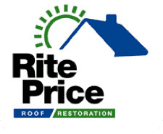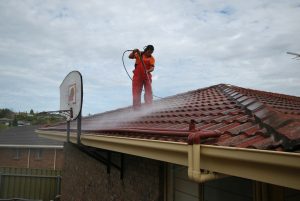There have never been any preventative measures that supersede maintenance when it comes to keeping your roof at it best shape and look. This affordable way of ensuring your roof keep it fitness can best be provided by one of our experts at Rite Price Roofing. If you are looking to carrying out roof inspections on your roof at intervals of about every six months so that you will be vigilant to notice any problems with your roof and get it fixed before it become a bigger issue then you’re on the right page. As always we advice all our valuable customer to allow expert to climb their roof rather than doing it themselves, this is due to the fact that injury and lost of life or damage of property may occur when a non expert is climbing the roof. Our roof in Adelaide is exposed to all the harsh conditions in the environment and it is therefore bound to wear out due to erosion cause by this harsh weather conditions. However if you keep vigilant by conducting constant inspection, you’ll be able to take of any arising issues and affordable fix options will be provided by our expert to address them promptly, then you will avert spending so much money on replacement and you will enjoy your roof for a long time.
Another simple task that one can do to ensure roof maintenance is roof cleaning. This entails using a high pressure clean to remove the moss and lichen that have formed habitat on the tiles. These are dangerous because they largely contribute to erosion of the roof wearing it out before its span of life is over. This cleaning needs to be done very carefully by an experienced expert in the business so as to dislodge all the organisms hidden in the tiles and other parts of the roof. At Rite Price Roofing, we can do this for you at very competitive prices; we will give you the rite price for your home.
Affordable Roof Cleaning and Roof Drainage
On sloped roofs, removing debris from roofs and eaves and cleaning the gutters once or twice a year will solve most drainage problems. Remember also to check the downspouts and drains for damage, leaks or clogging.
For flat roofs, you need a drainage system that handles water, and it should be in working order at all times. Check to make sure water is not ponding anywhere.
Chimney Maintenance
While inspecting your roof, don’t forget your chimney. If mortar is crumbling that means moisture could be getting in. Also inspect the chimneypot. If this is damaged, you might need to replace it. If the chimney is no longer used, block off the top to keep birds out, and prevent rain and drafts from entering. Most repairs to these parts of the chimney require a professional.
Check the flu pipe, cowl and fastenings in and around the chimney. If they are becoming corroded, remove the rust and paint with galvanized iron primer and apply roof paint. Replace fastenings with galvanized or stainless steel fastenings.
Roof Flashing.
Flashing is used at connections between roof sections, around chimneys, vents, skylights—anywhere the plane of your roof is interrupted. They can be manufactured from steel, aluminum, copper or vinyl.
- What to look for:
- Loose flashing or flashing with holes in it.
- If you find loose flashing, don’t simply nail it back down. Replace the nails with galvanized screws for a longer lasting solution. Then, cover the screw heads with roofing cement. If you have copper flashing, use copper screws. Galvanized metal will cause copper to corrode.
- How to fix it:
- Small holes in flashing can be repaired, but larger ones require the replacement of the flashing. To repair a hole in flashing, clean the surface and abrade it with a stiff wire brush or sandpaper. Clean it again. Cut a patch of replacement flashing material that is larger than the hole by 2” on all sides. Apply roofing cement to the hole and the surrounding area and press the patch firmly over it. Hold for about 3 minutes. Cover the patch with another layer of cement.
How to Seal Chimney Flashing
Chip out the mortar and caulking that joins the flashing to the chimney, using a hammer and chisel. Caulk between the chimney and the cap flashing, and between the cap and step flashing with roofing cement.
How to Seal Vent Flashing
Calk between the vent pipe and the vent flashing (the cone shaped support for the pipe) with roofing cement. Lift the shingles surrounding the vent flashing and apply roofing cement on them, extending it up to the vent flashing. Keep extra shingles on hand in case you need to replace any while you are working on this. Check that all the areas where shingles meet the flashing flange (the flat part beneath the vent flashing) are sealed with roofing cement.
How to Seal a Skylight
Lift the shingles around the skylight and apply roofing cement under them. Extend the cement across all joints up to the flange (the metal girdle of the skylight box).
How to Seal a Drip Edge
Flashing along the rake (sloped edge) and drip (straight) edge of your roof is also flashed. To seal the rake edge, lift the shingles along the downward slope and apply roofing cement all the way to the edge. Don’t seal the drip edge along the flat face of the eave, because that will block drain holes.
How to Seal Flashing Along a Dormer
Chisel out any old caulking and re caulk between the flashing and shingles or siding with an outdoor weatherproof caulk or roof cement. Caulk seams in flashing also.
Annual Fall Check Up
Keep tree limbs trimmed back to avoid nasty roof damage during storms and high winds!
If you live in a cold climate that gets snow, a fall inspection and cleanup can prevent costly damage. Build up of heavy snow can cause ice dams, and the weight can damage roofs, gutters, and downspouts. Fall roof maintenance steps can include:
Clean Gutters and Down Spouts – removing debris, snow and ice from gutters and drains ensures that melting snow can run off into the gutters without becoming trapped on the roof, and potentially refreezing. Check your gutters periodically throughout the winter and keep them clear of debris.
Remove Snow Buildup – use a long handled rake made for snow removal to remove built up snow during the winter. This will prevent ice dams and reduce stress on the roof due to excess weight. Ice dams form when snow melts during the day, flows under the shingles and refreezes at night. If this happens repeatedly, water can enter the attic and damage the roof and even the insulation, ceilings and walls.
Install Adequate Attic Insulation
– especially if your home was built before 1970, check to see that you have adequate insulation in your attic. Most builders recommend a minimum of R-30, and R-38 in colder climates. This will reduce the chance that heat escaping from your attic will melt roof snow, creating ice dams when the melted snow refreezes at night. It will also cut your heating costs and help your house stay warmer.
Install Adequate Attic Ventilation
– make sure you have adequate ventilation system in your attic. This will keep the underside of your roof deck dry and cool, and extend the roof life by reducing dry rot, cupping and curling.
In both types of roofing systems, maintenance is highly crucial to ensure tip-top condition. For roofing services in Adelaide, contact Rite Price Roofing and there highly qualified staff will be of service.


